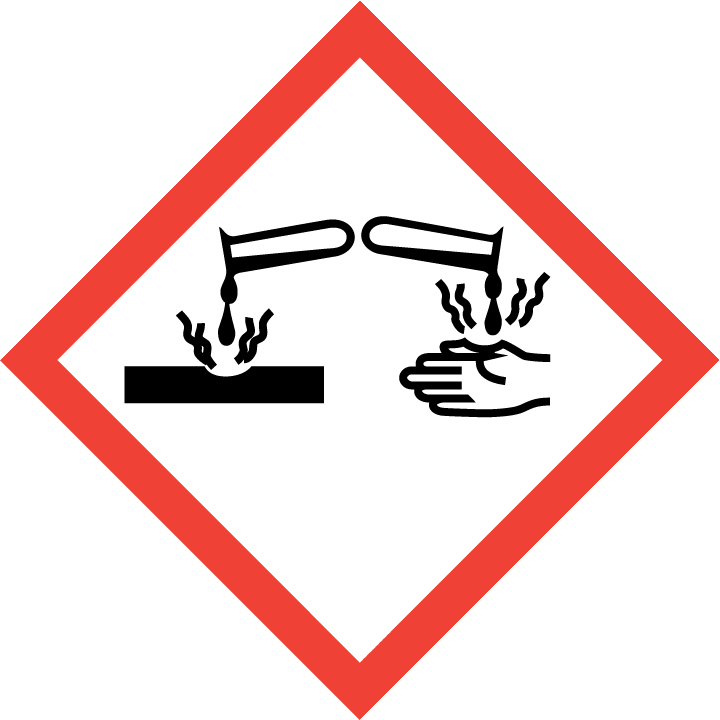 

|
 

|
Corrosives

| Definition: | ||
| A chemical that causes visible destruction of, or irreversible alterations in, living tissue by chemical action at the site of contact | ||
| Examples: | ||
| sodium hydroxide, potassium hydroxide, silver nitrate, hydrochloric acid, nitric acid, sulfuric acid, and hydrofluoric acid, LA-CO silver brazing flux. |
||
| Precautions: | ||
| Always add concentrated acids to water, not water to acid | ||
| Note that solutions may become very hot when acids or bases are diluted | ||
| Concentrated volatile corrosives should be handled in a fume hood | ||
| Use appropriate eye protection and appropriate gloves | ||
| PPE as required by hazard certification | ||
| Possible Health Effects: | ||
| Acids: | ||
| burns and blisters the skin | ||
| lung irritation if inhaled | ||
| poisoning if ingested | ||
| Bases | ||
| burns and blisters the skin | ||
| damage can progress deep into tissues | ||
| severe burns to eyes | ||
| poisoning if ingested | ||
| Hydrofluoric Acid | ||
| causes very deep burns that are not immediately noticeable | ||
| contact with this material may cause poisoning and death | ||
| specific training is required for use of this material | ||
| First Aid: | ||
| Immediately flush skin or eyes with tepid water for at least 15 minutes | ||
| If hydrofluoric acid, apply calcium gluconate gel | ||
| See SDS for more detailed first aid treatment | ||
| Get medical attention if significant burns, or if in eyes,
or if hydrofluoric acid was involved |
||